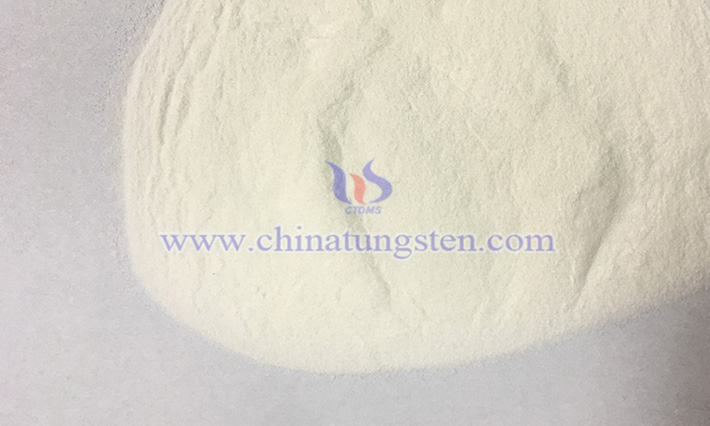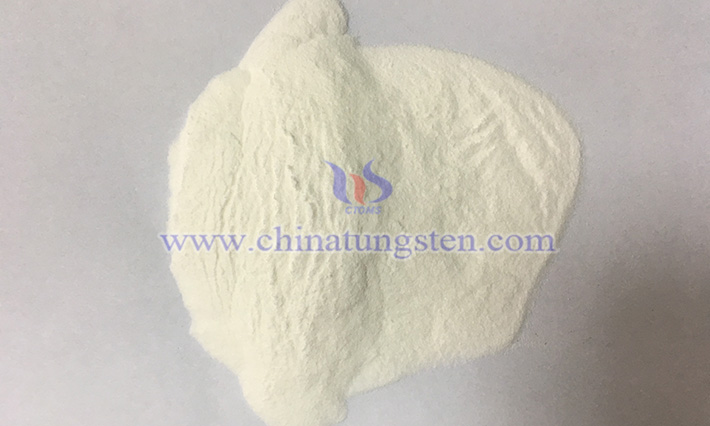Ammonium Metatungstate: the "Silent Guardian" in Flame-Retardant Fabrics
- Details
- Category: Tungsten Information
- Published on Tuesday, 03 June 2025 14:00
CTIA GROUP LTD’s Ammonium Metatungstate (AMT) is a white or pale yellow crystalline powder with high water solubility, good solution stability, and acidity, as well as high chemical stability. However, under specific conditions (e.g., high temperatures), it may decompose or undergo transformation reactions. These properties make AMT a strong candidate for applications in flame-retardant fabrics.

I. Why AMT is Used in Flame-Retardant Fabrics
AMT’s excellent chemical stability ensures that it maintains its structure and performance in complex chemical environments, preventing deactivation due to reactions with other substances during fabric processing. This stability guarantees long-term effectiveness in flame-retardant fabric systems.
AMT’s water solubility facilitates the fabric processing workflow. During fabric finishing, AMT can be dissolved in water and uniformly mixed with other functional additives, such as softeners or antistatic agents, forming a stable solution. This solution can be applied to fabrics via methods like impregnation or coating, ensuring even distribution on the fabric surface or within fiber gaps. In the impregnation process, fabrics are soaked in the AMT-additive solution, allowing it to penetrate the fibers. After drying, AMT and other additives form a uniform flame-retardant protective layer on the fibers.
II. Flame-Retardant Mechanism of AMT
When a fire occurs and temperatures rise sharply, AMT undergoes complex physicochemical changes to suppress flame spread.
Gas Release and Oxygen Dilution: AMT decomposes under heat, releasing ammonia gas (NH₃) and water (H₂O). Ammonia, a non-combustible gas, forms a gas barrier around the fabric, diluting the oxygen concentration in the surrounding air. This acts like an invisible shield, reducing oxygen availability—a critical component for combustion—thus hindering the burning process.

Heat Absorption: The evaporation of water released during AMT decomposition absorbs significant heat, lowering the fabric’s surface temperature. For example, if a fabric’s surface reaches a temperature high enough to sustain combustion due to flames, the heat-absorbing evaporation of water rapidly cools it below the ignition point, halting the fire.
Protective Film Formation: AMT decomposition forms a dense tungsten oxide protective film on the fabric surface. This film acts like a fire-resistant armor, blocking oxygen from reaching the fabric and preventing heat transfer to the interior, effectively inhibiting combustion and providing critical time for evacuation or firefighting.
III. AMT Compared to Other Flame Retardants
The choice of flame retardant is critical in the development and production of flame-retardant fabrics. AMT stands out due to its unique properties, but how does it compare to other common flame retardants?
AMT’s Advantages: At high temperatures, AMT rapidly undergoes structural changes, forming a dense protective film on the fabric surface. This film acts as a robust shield, reducing oxygen contact and blocking heat transfer to the fabric’s interior, thus suppressing thermal decomposition and combustion. Additionally, AMT does not release harmful gases or substances during processing or use, making it environmentally friendly.

Halogen-Based Flame Retardants: Once widely used, halogen-based flame retardants work by releasing hydrogen halide gases during combustion, which capture free radicals and interrupt the combustion chain reaction. However, with stricter environmental regulations, their drawbacks have become evident. During high-temperature combustion, they release toxic hydrogen halide gases and smoke, posing risks to human health and the environment. Their flame-retardant efficiency can also be unstable in complex combustion environments.
Phosphorus-Based Flame Retardants: These work in the condensed phase by promoting char formation on the fabric surface, providing insulation and oxygen exclusion. While some phosphorus-based retardants offer good flame-retardant efficiency, they often lack durability, with performance declining significantly after repeated washing or prolonged use. Additionally, certain phosphorus-based retardants may negatively affect the fabric’s feel or color.
- Chinatungsten Online: ammonium-metatungstate.com
- CTIA GROUP LTD: en.ctia.group
- Tungsten News & Price: www.ctia.com.cn
- Molybdenum News & Price: news.molybdenum.com.cn
- Tel.: 86 592 5129696; Email: sales@chinatungsten.com



 sales@chinatungsten.com
sales@chinatungsten.com